Former USSR Culture Workshop
5. Immigration Waves
FSU immigrants in Arizona history — Bloom, Goldwater, Drackman, Emilio Kosterlitzky, Jacob Isaacson, Russian Bill, Igor Gorin, Spiritual Christian Pryguny, Germans from Russia, M. Moktatchev,
Weeds — Russian Thistle (tumbleweed), Russian knapweed
RUSSIAN AMERICANS
Where They Came From: The earliest Russians sailed across the Bering Sea from Kamchatka to Alaska, where they set up a profitable fur trade in the mid-1700s. But the great mass of immigrants came to America from European Russia, primarily the western and southern border areas, between 1880 and 1914. After 1920, Russians and other ethnic groups fled from all reaches of the U.S.S.R. as exiles from the new Communist regime.
Why They Left: Most immigrants were peasants seeking economic freedom and a better life. Czar Alexander II's emancipation of the serfs in 1861 had only worsened their already wretched situation. Russia's archaic methods of agriculture contributed to periodic costly famines. High taxes reduced peasant landholdings by half. Lack of sanitation and medical care kept mortality rates high. Peasant education was unheard of. And the disastrous Russo-Japanese War of 1904 sacrificed whole divisions of peasant "cannon fodder" and impoverished the Russian countryside.
Several religious groups--the Mennonites, Old Believers, and Molokans--left Russia because of persecution. Following W.W. II, 20,000 Russians released from Nazi prison camps chose to seek asylum in the U.S. (However, thousands of other Russian soldiers and ex-prisoners who wanted to come to the U.S. were returned to the U.S.S.R. by American authorities, who were reacting to pressure from Stalin.) In the years since, most Russians who have come to the U.S. are artists, intellectuals, and military officers who defected or were expelled from the Soviet Union.
Where They Settled: The first Russian settlers established a mainland settlement at Sitka, Alaska, in 1804, and called it New Archangel. When Russia sold Alaska to the U.S. in 1867, most of the colonists stayed on with their native wives and children. Others migrated to California, particularly San Francisco, where a small colony gathered on Russian Hill.
In the 1880s, the first tides of peasants from European Russia reached New York City. Though a Russian community grew up on the Lower East Side, most immigrants chose to leave the city. Between 1910 and 1919, Russian populations multiplied several times in Michigan and Massachusetts, where the automobile and textile industries were burgeoning. W.W. I pulled these immigrants toward munitions, steel, and shipbuilding industries in Chicago, San Francisco, Philadelphia, and Pittsburgh.
Numbers: From 1900 to the outbreak of W.W.I., the number of Russian immigrants increased steadily. Over 51,000 arrived in 1913 alone. In 1920 the census bureau estimated that there were 731,949 Russian Americans (foreign and native-born) in this country.
Present-day figures are not very reliable. An overwhelming percentage of Russian immigrants who arrived between 1898 and 1914 were single males, who intermarried. However, the U.S. census reported that in 1973, about 1,747,000 Americans perceived themselves as being of Russian origin.
Their Story in America: Like many other ethnic groups, the Russian immigrants had a difficult time assimilating into the American culture. Practically none of them could speak a word of English. Most of them had very little money; from 1910 to 1914, only 5% had as much as $50 in their pockets. About 90% took bottom-of-the-ladder jobs in railway construction and coal mining or in the iron and steel, canning, lumber, and meat-packing industries. Long hours and low pay further hindered their assimilation.
Because of their labor union sympathies and Russian identities, these immigrants found difficulty in obtaining jobs and otherwise being accepted during the red scare following the 1917 Russian Revolution.
The émigrés who fled the Communists, by and large, were aristocrats, professionals, and army officers. Peter A. Demens (born Petr Damianov), a businessman, founded St. Petersburg, Fla., in 1888. Other Russians named Moscow, Ida.; New Kuban, N.J.; Nikolaevsk, Alaska; and two Odessas, one in Texas and the other in Washington.
Famous Russian Americans: Composers Sergei Rachmaninoff, Igor Stravinsky, and Dimitri Tiomkin; actress Natalie Wood; author Vladimir Nabokov; Svetlana Alliluyeva, daughter of Joseph Stalin who defected to the West in 1966 and settled in the U.S. in 1967; Marina Prusakova Oswald Porter, widow of Lee Harvey Oswald.
Immigrants to US
http://www.spartacus.schoolnet.co.uk/USAErussia.htm
http://www.russian-americans.org/
http://vlib.iue.it/history/USA/ethnic.html
Russians in Arizona History
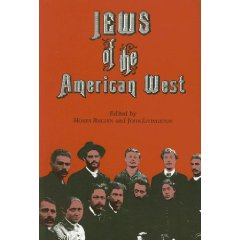 Dinnerstein,
Leanard. "From
Desert
Oasis
to
the desert Caucas: The Jews of Tucson." Jews of the American West,
by Moses Rischin, John Livingston. 1991. Pages 136-163
Dinnerstein,
Leanard. "From
Desert
Oasis
to
the desert Caucas: The Jews of Tucson." Jews of the American West,
by Moses Rischin, John Livingston. 1991. Pages 136-163Kushner, Gilbert. "The Jewish community in Tucson: Structure and forms of Jewish Self-Identification" (MA thesis, university of Arizona, 1958).
Arizona Jewish Pioneers
It is reported that in 1877, there were 48 Jews living in the Arizona territory (from Russian Poland, Lithuania, ..)
2,000 in 1897, 500 in 1907. Most famous: Goldwaters, Drachmans, Bloom. ...
Temple Emanu-El's 100 Year Celebration!
Valley residents recall Goldwater's community ties
Senator was staunch backer of Jewish causes
Chapters in American Jewish History
Chapter 21 Staying Jewish on the Arizona Frontier
Goldwaters, Drachmans
http://www.ujc.org/page.html?ArticleID=36899
http://www.jewishworldreview.com/jewish/arizona_jewish.asp
The Wernick Family Record of Remembrance: From Shtetl to Tucson
http://www.azjhs.org/
http://parentseyes.arizona.edu/bloom/oralhistories/index.html
Background of Oral Histories on Jews from the Former Soviet Union
http://parentseyes.arizona.edu/bloom/oralhistories/rubin060600.html
Joseph Goldwater
http://parentseyes.arizona.edu/bloom/bloomslideshow/pages/img2.html
http://parentseyes.arizona.edu/bloom/bloomslideshow/pages/img12.html
http://parentseyes.arizona.edu/bloom/bloomslideshow/pages/img20.html
" 'Russian George' have been scourges of whole districts in Colorado, New Mexico, and Arizona, and have had their memories embalmed in yellow-covered literature. "
Bishop, William Henry. "Out West: Across Arizona", Harper's New Monthly Magazine, March, 1883. Page 499
Reprinted from "Writers of the Purple Sage: Origins of a National Myth," a project of the Tucson Public Library, funded by the National Endowment for the Humanities. Arizona Historical Society, 1983.
William "Russian Bill" Tattenbaum, the Noble Outlaw... claimed he was the son of a wealthy Russian aristocrat the Countess Telfrin, an officer in the Czar's exclusive Imperial White Hussars, and that he left Russia because he was going to face an embarrassing court-martial for striking a superior officer. Was one of the San Simon "rustlers,” 30 - 40 outlaws who stole cattle and horses in western Arizona, northern Mexico, and southern New Mexico, and sold them in the San Simon Valley (east of Tucson), Arizona. — The Story of Russian Bill – How the Shakespeare Citizens Got Red of a Bad Gang, September 23, 1883, New York Times.
Texan
Dare-Devils: The Genuine Cowboy Comparatively Free
from Vice. ... gain adventure or both Russian Bill and
Sandy King froni New York recently lynched near the Texas
line are good types of this class Russian Bill spoke ...
Los Angeles Times, page O_5,Jun 8, 1883
Wild
Scenes, Among the Cowboys on the Mexican Frontier,
... Lynching Russian Bill
Lewiston Evening Journal, page 8, Nov 15, 1884
Lyched
For
Lying: Russian Bill Told the Truth At Last, But Too Late
... He was Russian born, had money in the bank. — The
Sarnia Observer, Jan 21, 1898, page 7.
Two Types of Bad Men: The Real Thing Is Imitated By The Plated Article
The Carroll Herald, page 1, Jan 13, 1892
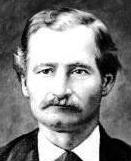 Michel Goldwater (1821-1903)
Michel Goldwater (1821-1903)
"Big Mike" Barry's grandfather, fled Russia for France to avoid police reprisals and conscription after becoming involved with underground Jewish dissidents. He later sailed for England where he married Sarah Nathan.
TUSD History: The First Hundred Years
Davis, Holladay and Drachman 1900 - 1910 - Part 1
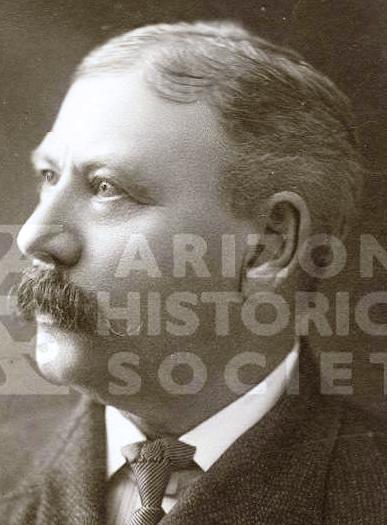 Samuel
H. Drachman, 1837-1911
Samuel
H. Drachman, 1837-1911 Sam Drachman was born in Petrikov, Russian Poland, 1837. .. 18 years of age, shipped to America ... Confederate Army during the Civil War. .. read Ross Browne’s book on Arizona ... to Tucson, 1867. established a cigar and tobacco shop on West Congress Street. member of the Seventh Territorial Legislature and served as a councilman for the City of Tucson.
According to the book, Arizona--The Youngest State, Drachman contributed much to education. It said, “Public education in Tucson owes Mr. Drachman a great debt, for during the nine years of his service as school trustee, he achieved great and lasting results doing work which still stands as a memorial to him.”
On December 17, 1875. Drachman was married in San Bernardino. California. to Jennie Migel, a native of Russia. They had three children, a son Herbert, and two daughters. Lucille and Myrtle. Myrtle, in the early 1900’s, was a school teacher in Tucson Public Schools. died 1911
Photo: Samuel H. Drachman, 1837-1911, Tucson Territorial Pioneer Project.
Jenny Migel Drachman, 1859-1927
Emilio Kosterlitzky
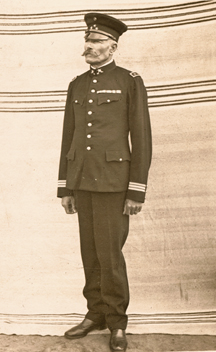 History
Professor
to
Discuss
‘Masculinity,
Family,
and
the
Border
Crossings
of
Emilio
Kosterlitzky’
History
Professor
to
Discuss
‘Masculinity,
Family,
and
the
Border
Crossings
of
Emilio
Kosterlitzky’In 1872 Kosterlitzky deserted from a Russian ship in Puerto Cabello, Venezuela. He made his way to northern Mexico and became a frontier cavalryman. In 1913, after losing a revolutionary battle for the border town of Nogales, Sonora, he became a U.S. prisoner-of-war. After his release, he moved with his Mexican wife and children to Los Angeles. There he became a spy for Bureau of Investigation, using his talents as a policeman and linguist to defend his new homeland until his death in 1928. [He mostly spied on Germans, also Jews and Spiritual Christian Pryguny from Russia]
A Mexican Cossack in Southern California
Emilio was born in Moscow on November 16, 1853. "A Cossack on the U.S.-Mexican Frontier: The Transnational Life and Times of Emilio Kosterlitzky," examines the life and times of Emilio Kosterlitzky, a Russian immigrant to the U.S.-Mexico borderlands whose career as an Apache fighter, customs guard, and spy from the 1870s to the 1920s opens a window onto the transformation of the borderlands from an isolated frontier to a patrolled crossroads between nations.
 1906
Photo, Library of Congress: Col. Kosterlitzky, who
is in command of the Mexican troops in Cananea, Mexico,
where there was an outbreak of violence when George and
William Metcalf, Americans, were killed and the lumber
yard set on fire during miners' strike.
1906
Photo, Library of Congress: Col. Kosterlitzky, who
is in command of the Mexican troops in Cananea, Mexico,
where there was an outbreak of violence when George and
William Metcalf, Americans, were killed and the lumber
yard set on fire during miners' strike. Book: Smith, Cornelius C. Emilio Kosterlitzky: Eagle of Sonora and the Southwest Border. 1970, Arthur H. Clark Company. ISBN 10: 0872090744, ISBN 13: 9780872090743

Online Audio Presentation to Prescott Corral of Westerner's by Dr. Cornelius E. Smith, "Emilio Kosterlitzky, Eagle of Sonora and the Southwest Border", Sept 3, 1971 Length: 46:28. Sharlot Hall Museum Audio Collection, Prescott.
Book Review: Emilio Kosterlitzky: Eagle of Sonora and the Southwest Border by Cornelius C. Smith, Jr.,
in The Hispanic American Historical Review, Vol 52, No. 2 (May 1972) pages 304-306.
— in The Pacific Historical Review, Vol. 40, No. 4 (Nov., 1971), p. 550
— in The American Historical Review, October 1971, page 1232
Truett, Samuel. "Transnational Warrior: Emilio Kosterlitzky and the Transformation of the U.S.-Mexico Borderlands, 1873-1928". Continental crossroads: remapping U.S.-Mexico borderlands history By Samuel Truett, Elliott Young. Pages 241-268. Google Books
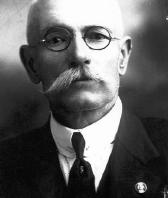 Top Young
Historians, Samuel Truett, 42. History News Network
Top Young
Historians, Samuel Truett, 42. History News NetworkGoogle books snippet view
Emilio Kosterlitzky, Wikipedia.
Find-a-Grave. Buried Calvary Cemetery, East Los Angeles.
"Emilio Kosterlitzkym, The mailed fist of Diaz, " The Bengal Club. From book by C.C. Smith, recommending this as a Hollywood type character. The Rurales
"The Russian Cossack Turned Special Agent", The FBI: A Centennial History, 1908-2008, The Nation Calls, Page 6.
Russian tamed Sonora:He, Rangers shared goal Russian brought law to Sonora. by Paul L. Allen and Peter M. Pegnam, 1990. Tucson Citizen Publishing Company, Tucson, Arizona. Pages 28-30
The Dazzling Mexican Cossack, by Donal N. Bentz,
East Los Angeles: History of a Barrio, By Richardo Romo, University of Texas Press, Jul 5, 2010, page 107
L.A. Then and Now: Russian-Born Soldier of Fortune Thrived in West. Emilio Kosterlitzky captured and released Geronimo, chased Pancho Villa and later went after rum-runners for the FBI during Prohibition. Los Angeles Times, December 18, 2005
El Espititu de los esposos Kosterlitsky, by Francisco Bustamante Tapia, Sonora Magica, 28 June 2010
Arizona Rangers, edited by M. David DeSoucy, 2008, pages 23-24
Emil Kosterlitzky made his name on border, by Paul L. Allen, Tucson Citizen, Oct 03, 2005.
The Life and Work of Francis Willey Kelsey: Archaeology, Antiquity, and the Arts, by John G Pedley, 2012, pages 64, 100-117
Kosterlitzky, Emilio (1853-1928), Mexico at War: From the Struggle for Independence to the 21st-Century Drug Wars, by David F. Marley, 214, pages 191-194.
Anarchism and the Mexican Revolution: The Political Trials of Ricardo Flores Magón in the United States, by
Colin M. MacLachlan, University of California Press, 1991, pages 15-16, 83-84
Al Sieber: Chief of Scouts, by Dan L. Thrapp, University of Oklahoma Press, Nov 28, 2012, pages
Clark A. Cubley and Joseph A. Steiner, "Emilio Kosterlitzky," Arizoniana, Vol 1, No.4 (Winter, 1960), page 12-14. Summary.
212: The Masonic Sword of Colonel Emilio Kosterlitzky, Live Auctioneers
A Mexican Cossack in Southern California: Fame, notoriety, and anonymity in the borderlands, by Samuel Truett, Huntington Frotiers, Fall/Winter 2005, pages 1, 14-17
Quién y cómo fué la Vida de Emilio Kosterizlitzky en Sonora, A mi Sonora, febrero 13, 2013
Emilio Kosterlitzky Collection, 1883-1959. Archival Resources @ ASU.
ASU Libraries
- HAYDEN ARIZONA F1233.5 .K6 S6 LIB USE ONLY
- HAYDEN AZ HIST FOUND F1233.5 .K6 S6 LIB USE ONLY
- HAYDEN CHICANO F1233.5 .K6 S6 LIB USE ONLY
- HAYDEN STACKS F1233.5 .K6 S6 SHELF
- WEST STACKS F1233.5 .K6 S6 SHELF
Jacob Isaacson
Important Dates in Nogales History — Santa Cruz County: History
In 1880, Jacob Isaacson, a Russian immigrant, built a trading post, called Isaacson, which later became Nogales.
Norman, Laura M., A. Donelson, E. Pfeifer, and A.H. Lam
Colonia development and land use change in Ambos Nogales, United States - Mexican Border, U.S. Dept. of the Interior, U.S. Geological Survey, Open-File Report 2006-1112, 2006, page 12.
By 1853, the Gadsden Purchase established the southern part of Arizona, annexing it to the United States. In 1880, a Russian immigrant, Jacob Isaacson, built a trading post in his namesake, which later became Nogales, Ariz.; years later, Nogales was the site of the first rail connection between the United States and Mexico. The city of Nogales, Ariz., which was officially founded in 1882 along this north-south railline to promote trade between the two countries, was incorporated in 1893.
City of Nogales: History — Wikipedia: Nogales, Arizona, Trivia
Santa Cruz County: Nogales was also known as Isaacson. In 1880, Russian immigrant Jacob Isaacson built a trading post at present-day Nogales. The U.S. Postal Service opened the Isaacson Post Office but renamed it as Nogales in 1883.
Histoical Marker: Commemorating Jacob Isaacson: Pioneer Settler — 1880 —

Harriet and Fred Rochlin papers, 1850-1990, UA Archives
Fred Rochlin is a native of Nogales, Arizona. His parents were Russian immigrants who were among the pioneer settlers of that border town.
Fred Rochlin Papers, 1694-2002, UA Library Special Collections
She and her husband published the book Pioneer Jews: A New Life in the FarWest in 1984.
Papers of Harriet and Fred Rochlin, 1850-1990, UA Library Manuscript Collection SJA 002
communal institutions in Arizona, principally southern Arizona. The material is especially reflective of the late-nineteenth century and the role of Jews in the Arizona Territory.
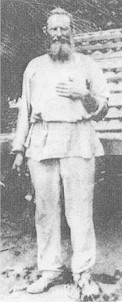 1911
Sectarian Molokans and Jumpers to Glendale from the
Caucasus
1911
Sectarian Molokans and Jumpers to Glendale from the
CaucasusMolokan-Jumper History in Arizona
Beginning in 1905 to 1912, about 2,500 Molokans and Jumper sectarians fled the Caucasus, most from Kars and Erevan oblasts, to Los Angeles, California. Beginning in 1911, many bought farmland between Glendale and Tolleson. By 1920, about 200 families lived in 4 villages on 8 square miles, each with it's own prayer house. During the poor economy, most moved back to California. Today a few families remain, still worshiping in the Russian language.
Demographics
Molokans in America, by Berokoff, Chapter 3
Russian Refuge: Religion, Migration, and Settlement on the North American, by Susan Hardwick
Molokan Settlers in Arizona: 1910 to 1920
Part of the series: Our lives in Arizona: a season of multicultural memories, music and dance
Phoenix Museum of History, Wednesday, March 10, 1999 -- 7 PM
Glendale: Brief History, by Jeff Scott
Molokans in Arizona, by Fae Papin-Veronin, 124 pages, 1999. 114 photos/ illustrations and a fold out map showing most all Molokan, Spiritual and Jumper resident's property and houses in 1920. A brief history of the colony with 20 families detailed — a community photo album with some family histories. CoversWWI, WWII, COs, youth groups, the Arizona UMCA, life on the farm for men and women, news clippings, and a note from the author. $35 from the UMCA Heritage Room, PO Box 5790, Hacienda Heights CA 91745. Out-of-print.
Chino valley photo
John Agnoll, one of the owners of the Russian gold mines near Congress, that is under option of sale and is developing, arrived from teh camp yesterday and confirms reports in circulation of the good showing make. "The deeper the shaft is sunk the better the property looks, and a sale is practically closed, was his statement yesterday.
Russian Strike Confirmed by Agnoll: One of former owners of gold mine near Congress says bug showing is made.
Prescott Journal Miner, page 3, Feb 25, 1915.
Russian gold group of mines...
M. Moktatchev
Recalling a dream: Lush cactus garden nurtured at Tovrea
http://www.azcentral.com/arizonarepublic/arizonaliving/articles/0225azjournal0225carraro.html
http://arizonamoms.com/guides/outdoor/recalling-a-dream-lush-cactus-garden-nurtured-at-tovrea
2006 Castle in the air
http://www.azcentral.com/travel/visitor/oddballaz/articles/0802tovrea-CR.html
http://www.tucson.com/travel2/visitor/oddballaz/articles/stories?id=0802tovrea
http://www.preservationnation.org/resources/case-studies/preservation-award-winners/city-of-phoenix-historic-preservation.html
A world-traveling Russian author, M. Moktatchev, decorated the grounds with 300 species of cacti from 5 countries.
http://www.9timezones.com/s/2006_11_01_.htm
http://newmarketservices.com/advertisers/downloads/PHOENIX.pdf page 22
Bird Cage Theater In Haunted Tombstone, Arizona
"Russian" Bill (ghost)
Horse Thieves, Nuisances And The Old West's Justice, by Casey 1984
Vladimir a 6-foot tall Russian arrived in Tombstone, Arizona. He had been one of the best marksmen in the Czar's Imperial Guards.
Russian Bill, By Marshall Trimble, Official Arizona State Historian. North Valley Magazine. August 5, 2009
"William Tattenbaum, a young Russian officer in the czar’s army....deserted the army and came to America to become an outlaw. He arrived in Tombstone, Arizona, in 1881, all decked out in new cowboy clothes."
The Igor Gorin Memorial Award
Established in 1987 by Mary S. Gorin in memory of her husband, a world-renowned singer, the Igor Gorin Memorial Fund provides financial assistance to young opera singers.
Mr. Gorin was a Russian refugee. Community Foundation for Southern Arizona
Arizona's Hermitage Cat Shelter
founded by a Russian Orthodox nun in 1965, When Sister Seraphim entered a nursing home in 1989, a board of directors took over the management and began adopting out the cats. The shelter is now both an adoption center and a sanctuary for special-needs cats,
Movie: In Old Arizona
Western, 1929 95 minutes
Ivan Linow - Russian Immigrant
Colonel Powers then studied Russian at Arizona State University—where his wife Doris
was an English professor— In 1965, he received the first degree in Russian that ASU had ever awarded.
Linda Evans, English Faculty. "Bridging borders at Selkirk College, Canada".
Global Perspectives 2007 Fall Report, Page 3. Mesa Community College International Education Office.
levans@mail.mc.maricopa.edu
international education plans between the MIR Centre for Peace, Selkirk College, and MCC
'"April in Arizona": Nabokov as an American Writer'. Susan Elizabeth Sweeney. American Literary History, Vol. 6, No. 2 (Summer, 1994), pp. 325-335.
In 1966, when a journalist asked the Russian-American writer Vladimir Nabokov (1899–1977) about his nationality and citizenship, he proclaimed: "I am as American as April in Arizona." Lolita (1955) He was White Russian, born
http://en.wikipedia.org/wiki/Vladimir_Nabokov
http://en.wikipedia.org/wiki/White_emigre
Michael Allen McCollum, Science Fiction Writer
He was involved in an effort to create a joint venture company with a major Russian aerospace engine manufacturer and has traveled extensively to Russia.
Brenda Meckler was born Goldie Weisberg in 1900 in Russia. In 1904 she immigrated with her family to the United States. She moved to Phoenix at age 18 where she established a name for herself as a writer, producer, and director. In 1922 Brenda helped establish the Phoenix Little Theatre. She served as president of the organization from 1932-33. She also appeared on stage and directed some of the theater's most memorable productions. In 1937 Brenda spent 15 years working as a screenwriter for Universal Studios, Columbia Pictures, and RKO. During this time she changed her first name from Goldie to Brenda. In 1952 Brenda returned to Phoenix and married her brother-in-law Morris Meckler. In 1988 Algonquin Books published an autobiography of Brenda entitled, "Papa Was a Farmer". She died in 1996 at age 96. (Jewish News of Greater Phoenix)
Germans from Russia
http://www.lib.colostate.edu/gfr/project_papers/GFR0121.pdf
The Germans from Russia are the second largest ethnic group in Colorado and one of the most important contributors to the historic development of the state. Arriving around the 1880's, they became primarily the mainstay of the sugar beet growing and processing industries. Within two generations, they rose from field hands to fill leading positions in business, education, culture, and the political life of the state.
Ron Vossler, scriptwriter for film: "The Germans from Russia: Children of the Steppe, Children of the Prairie", was educated at Arizona State University...
I Heard My People Cry: One Family's Escape From Russia
Forward, Synopsis
Elizabeth Lenci-Downs, Fountain Hills, Arizona 247 pages 2003
http://www.lib.ndsu.nodak.edu/grhc/order/general/lenci.html
http://www.lencistudios.com/media/I%20Heard%20My%20People%20Cry.pdf
Reviews: http://www.lencistudios.com/bookreview.htm
http://www.grhs.org/library/reviews/i-heard.htm
http://www.amazon.com/Heard-My-People-Cry-Familys/dp/0965815897
review http://www.hfgr.org/i_heard_my_people_cry.htm
I Heard My People Cry Reviews - Six Girls On A Hoot!!! Reviews
Russian Arizona Directory
Bukharian Jews
Jews
Arizona Council on Soviet Jewry, 1979
Members of the Arizona Council on Soviet Jewry listen attentively to Avital Sharansky during a meeting in 1979. Avital is discussing the plight of her husband Anatoly. In 1977, Anatoly was imprisoned for more than ten years for promoting his Zionist and democratic beliefs in communist Russia. Anatoly and Avital helped thousands of Soviet Jews emigrate from Russia. Anatoly, who is now known as Natan, moved to Israel where he founded the political party Israel B'Aliyah. He then joined the Cabinet of Prime Minister Ariel Sharon. (From: Jewish News of Greater Pheonix)
Russian Plants and Animals
Prohibited, Regulated and Restricted Noxious Weeds
Russian Thistle (Russian cactus, Russian tumble seed/weed), weed, olive saltbush knapweed, Kale (Red Russian)
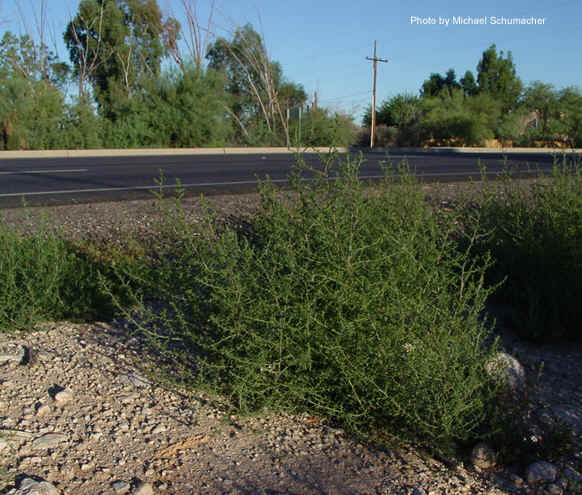
Salsola kali - Russian thistle, Tumble Weed
Before the 19th century, not a single tumbleweed blew across the United States. But then Ukrainian farmers migrated to North and South Dakota, bringing with them bags of flax seed, a plant used to make linseed oil and linen. Mixed in with the flaxseeds were Russian Thistle seeds, and the farmers unknowingly planted what would in a few years become a great ecological disturbance to many farmers. [Also called Russian cactus, Russian tumble seed.]
The mobile plant took over, covering more than a dozen states in just two decades, and reaching the Pacific Coast by 1900. The plant’s ability to survive in most any climate, and its practically foolproof way of distributing seeds would soon become a problem for many farmers across the country. .. But Russian thistle won’t be disappearing anytime soon. In southern Nevada, where nuclear weapons were tested above ground, Russian thistle was always the first plant to grow again in the soil at the testing site.
http://tncweeds.ucdavis.edu/esadocs/acrorepe.html
http://www.invasive.org/images/768x512/1459258.jpg
http://el.erdc.usace.army.mil/pmis/plants/html/acroptil.html
http://www.cdfa.ca.gov/PHPPS/IPC/weedinfo/acroptilon-repens.htm
Russianthistle or Common Russianthistle [Salsola tragus L.]
Spineless Russianthistle [Salsola collina P.S. Pallas]
Barbwire Russianthistle [Salsola paulsenii]
EMMER:-A GRAIN FOR THE SEMI-ARID REGIONS
Emmer, a cereal introduced into the Dakotas from Russia by German-Russian farmers, where it is successfully grown, is more fully described in Farmers' Bulletin No 139, issued by the U. S, Department of Agriculture in 190L It seems to possess peculiar ability to mature quickly and to withstand drouth, and to be thus specially well adapted for experimental planting in the mountain valleys of Arizona above 4000 feet elevation without irrigation It thrives best in a dry prairie region, with hot summers. Emmer, as a cultivated plant, has been grown for ages, The known annual production in Russia in 1900 was about 16,000,000 bushels" The annual rainfall in those parts of Russia where it is successfully grown, is from 15 to 17 inches, about two-thirds of which falls in the growing season" The latter condition, to some extent differing from our mountain valleys, need not be considered, provided that the rain, when it does fall, is permitted to sink into the land, and is there carefully conserved by keeping the surface well harrowed until the grain is three inches high. The yield in South Dakota, as reported, ranges from 30 to 60 bushels to the acre, weighing about 38 lbs. per bushel. As a stock feed it is relished by all kinds of stock, and when mixed with bran or shorts is especially adapted for milch cows, It is also an excellent swine food" The percentage of protein contained in Emmer is nearly as high as that of the very hardest wheat. The gluten content is also unusually high" In Russia a large amount of this grain is used for human food. It is said to make excellent bread, and is also crushed into a kind of coarse grits (Krupa) and used for porridge or for other kinds of breakfast food, There are many varieties, possibly twenty or more, which may be classified into two groups, called the white-chaff and the red-chaff groups. It will stand a good deal of spring frost Some varieties are bearded, while others, (the Yaroslav, for example), are not, There is much still to be learned relating to its practical cultivation in the mountain valleys of this Territory, the relative adaptability and productiveness of the different varieties. But that it merits experimentation is beyond doubt, both for the grain product and also for grain hay.
The feral hogs presently found in the US belong to two groups- hogs that are descendent of domestic stock (feral hogs) that were released, abandoned, or escaped and hogs descendent from wild stock (Russian boar) introduced for hunting purposes (Bratton). It is believed that the Havasu population grew from domestic stock as stated in the previous section.
Bratton, S.P. . Wild Hogs in the US. - Origin and Nomenclature.
"Feral Hog Management Plan," Havasu National Wildlife Refuge, United States Department of Interior, Fish and Wildlife Service, Region 2. October 2002. Page 10.